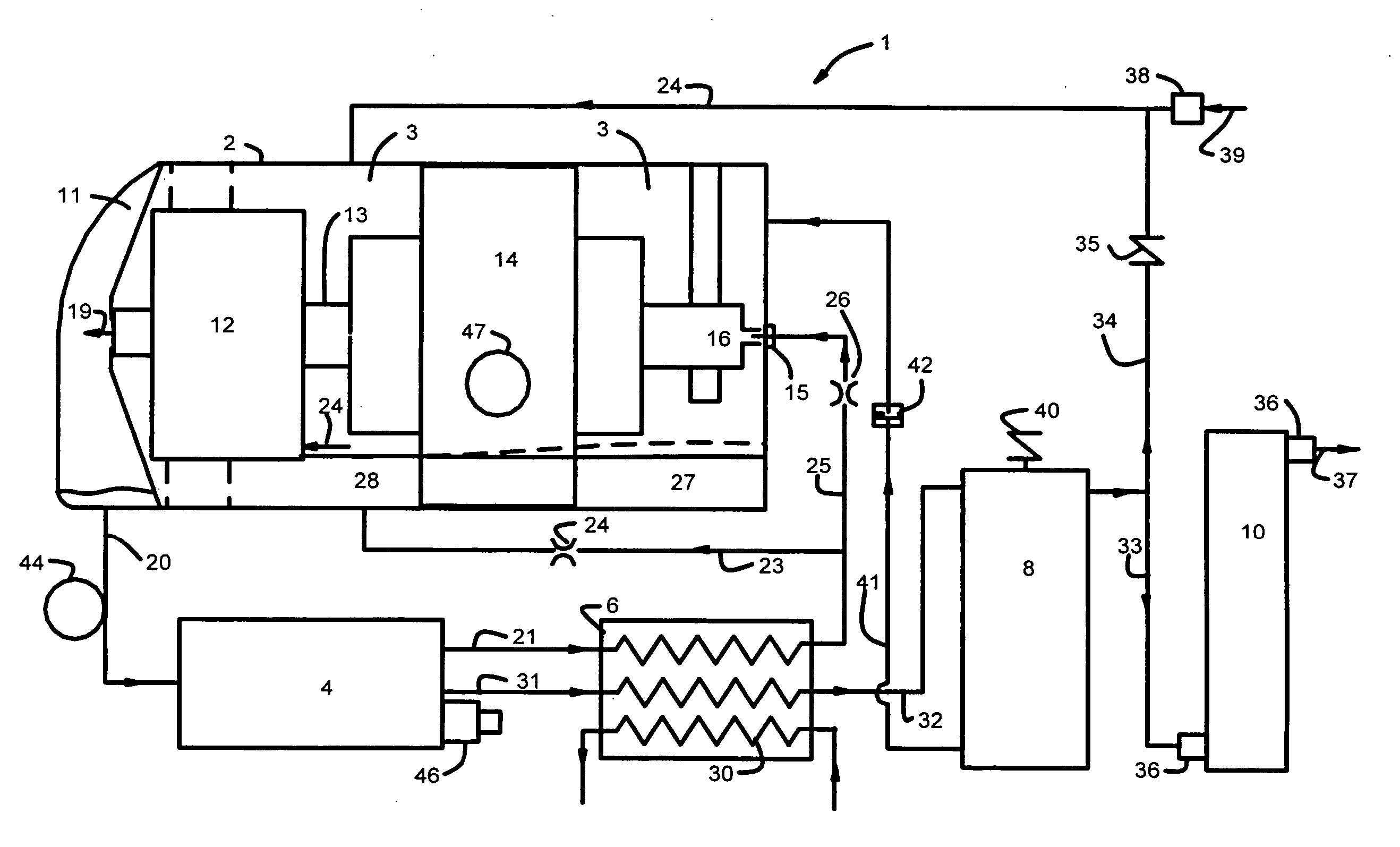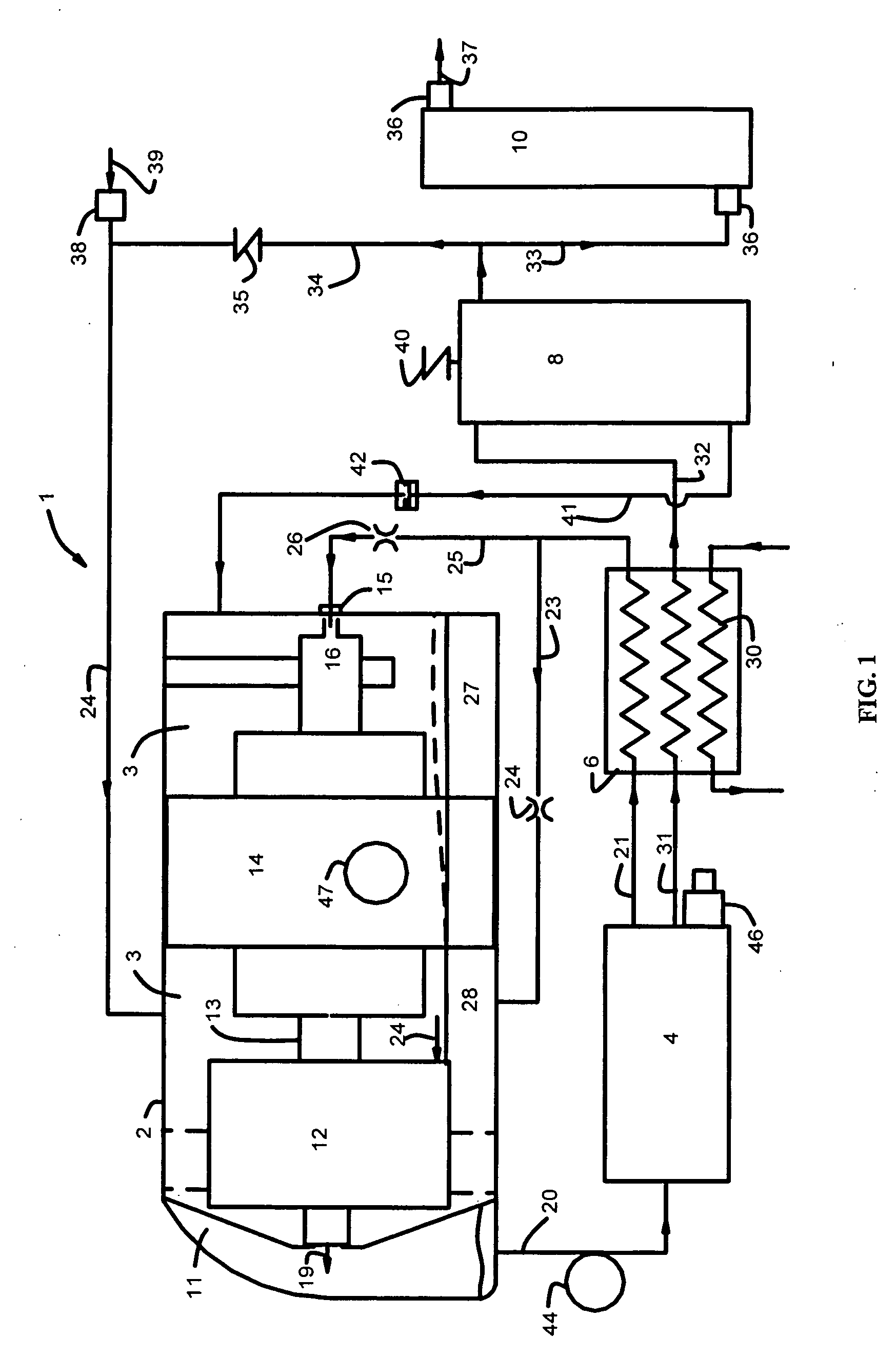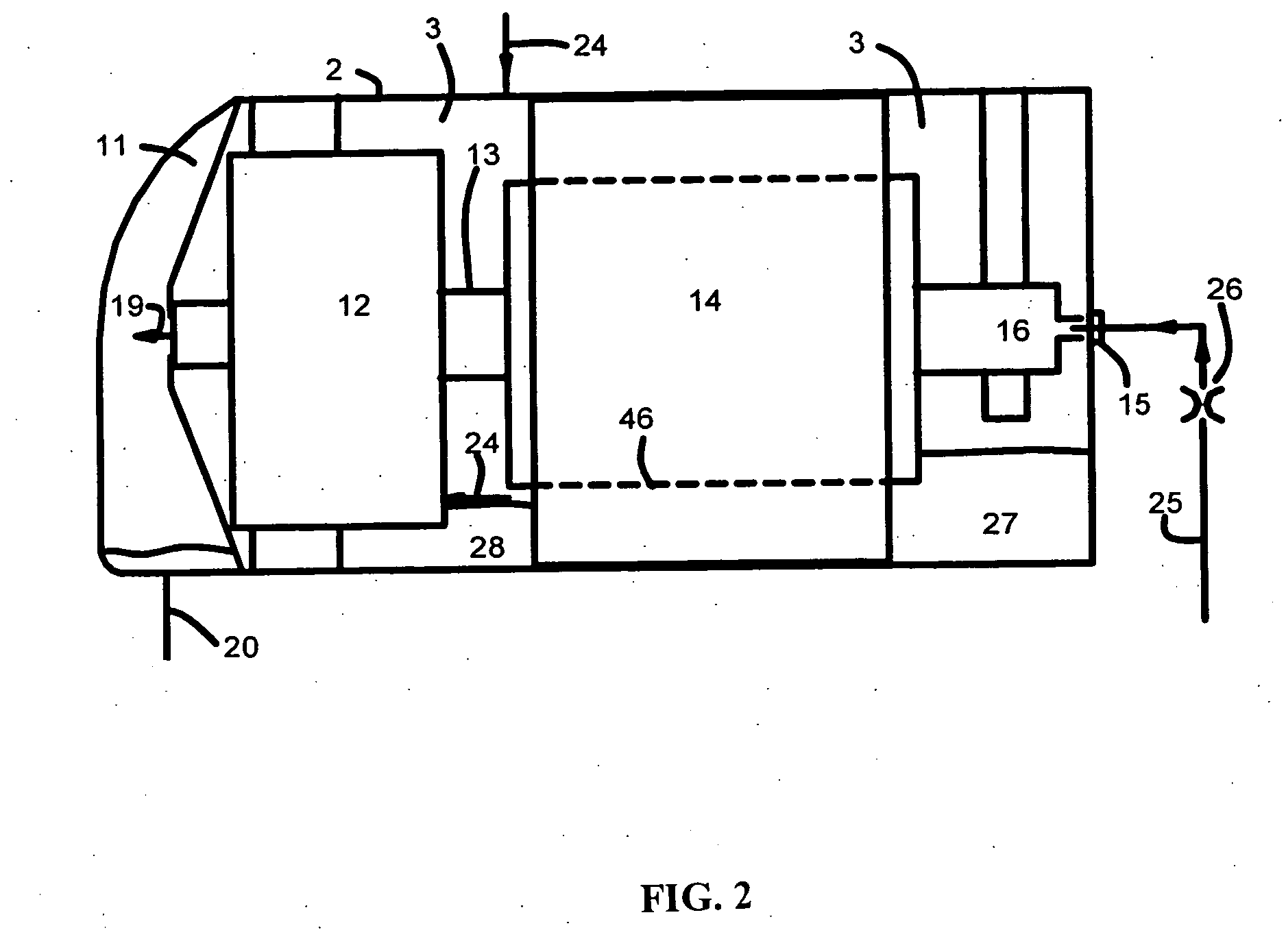Compressor with oil bypass
a compressor and bypass technology, applied in the direction of machines/engines, rotary/oscillating piston pump components, liquid fuel engines, etc., can solve the problems of increasing the likelihood of compressor shutdown or failure, increasing the amount of oil circulated, and reducing the efficiency of cooling the shell with a water cooling tube wrapped around it, so as to improve the oil-balancing effect and reduce the input power , the effect of reducing the drag on the motor
- Summary
- Abstract
- Description
- Claims
- Application Information
AI Technical Summary
Benefits of technology
Problems solved by technology
Method used
Image
Examples
example 1
[0040] For a compressor that has a displacement of 338 L / min and an oil circulation rate of about 7 L / min, the input power at 60 Hz was reduced from 8,300 W to 8,000 W when 5 L / min of oil bypasses motor 14 by flowing through line 23.
[0041] The preferred embodiment of the invention relates to GM refrigerators and particularly Copeland scroll type compression refrigeration units used for air conditioners. However, the present invention may be adaptable for other types of scroll type compressors in compression type refrigeration units.
[0042] In alternative embodiments, the compressor could include additional valves, apertures or passages to control oil in excess of the amount needed to lubricate the bearings. Also, it is also to be understood that the phraseology and terminology used herein is for the purpose of description and should not be regarded as limiting.
PUM
 Login to View More
Login to View More Abstract
Description
Claims
Application Information
 Login to View More
Login to View More - R&D
- Intellectual Property
- Life Sciences
- Materials
- Tech Scout
- Unparalleled Data Quality
- Higher Quality Content
- 60% Fewer Hallucinations
Browse by: Latest US Patents, China's latest patents, Technical Efficacy Thesaurus, Application Domain, Technology Topic, Popular Technical Reports.
© 2025 PatSnap. All rights reserved.Legal|Privacy policy|Modern Slavery Act Transparency Statement|Sitemap|About US| Contact US: help@patsnap.com



